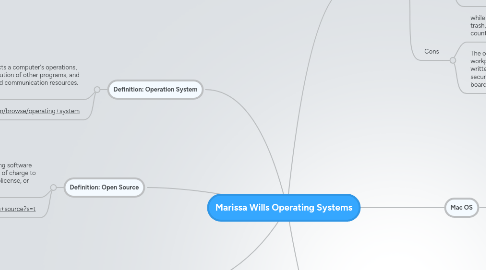
1. Windows 8
1.1. Pros
1.1.1. The biggest advantage of Windows is that it provides ready-made solutions that can be implemented by just about anyone who’s ever used a computer.
1.1.2. Microsoft Office is also 100% compatible with any file or document produced in the office space in America. In fact, MS Office isn’t compatible with other software and systems, so much as other software and systems strive to be compatible with Office!
1.1.3. Finally, software services are in large supply when it comes to Windows. From Microsoft’s official services, to Maryland software support, to Microsoft certification training for individuals, there is no lack of software support for Windows.
1.2. Cons
1.2.1. while this worldwide operating system is far from trash, it is often not as stable as its Mac or Linux counterparts.
1.2.2. The only other major disadvantage of using Windows in the workplace is that over 95% of all viruses and malicious software are written for the Windows OS. This means you have to double-down all security measures if you’re using Microsoft software across the board.
2. Mac OS
2.1. Pros
2.1.1. Mac OS is the only commercial operating system that is custom-made to work with Apple’s hardware. This gives it a level of efficiency, power, and stability, which is most important for the workplace.
2.1.2. Mac OS X is still the operating system of choice for graphic artists, designers and most others who work with visual and audio media. It also synchronizes user information well across multiple Apple devices, such as the iPhone and iPad, making it easily usable in a mobile office environment.
2.1.3. Mac computers’ durability is unmatched, and they take a long time to go out of date.
2.2. Cons
2.2.1. The biggest one is price: Apple computers simply cost much more than your average PC.
